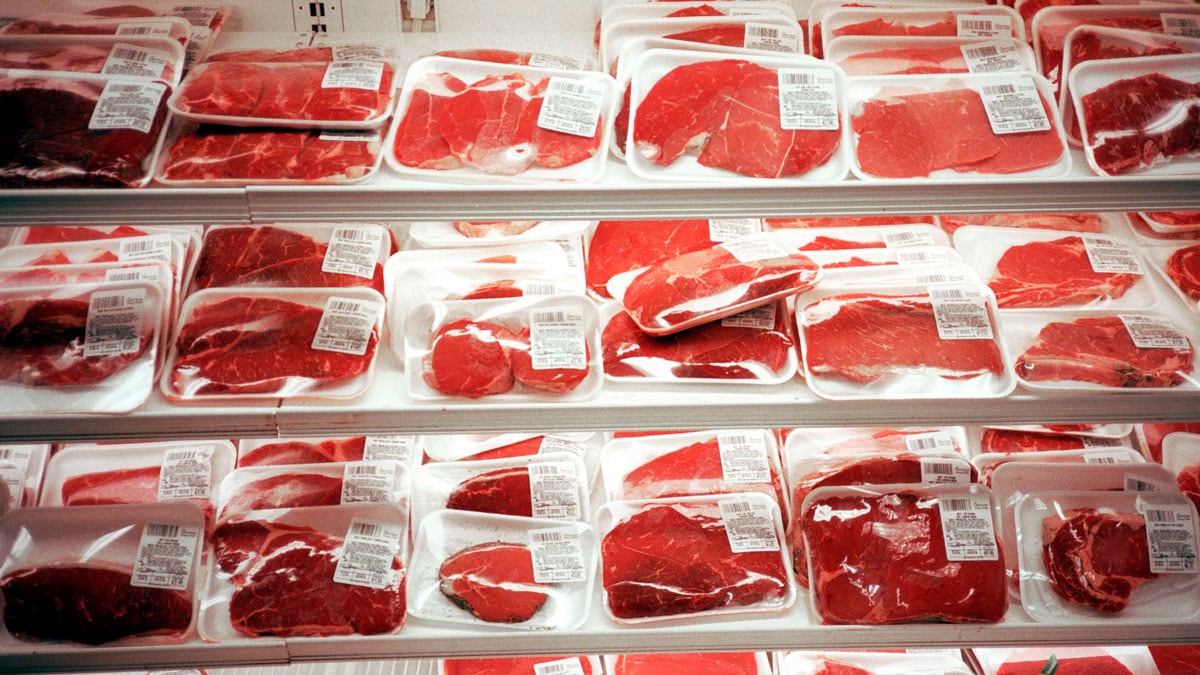Humans can’t get mad cow disease
For all the fuss over mad cow disease, otherwise known as bovine spongiform encephalopathy (BSE), it’s actually not transmittable to humans. Those mad cows can, however, contract a form of the disease that is transmittable to humans called variant Creutzfeldt-Jakob disease (vCJD), which, although technically not mad cow, is just as unpleasant and deadly. The strain is always fatal in cows, and usually fatal in humans within 13 months of symptoms occurring.
You won’t get it from eating steak
Often when there’s a mad cow outbreak, panicked people stop eating red meat which is then pulled from supermarket shelves. But humans can’t get the disease by simply eating regular cow meat. Generally, a human will only be infected if they eat the nerve tissue—brains or spinal cord—of an infected animal. People cannot get the disease by simply eating muscle meat like ground beef or steak, or by drinking milk from an infected cow. Additionally, humans cannot spread it to each other through casual contact. However, people who have spent more than 3 months in an area where many cases of mad cow disease have been reported aren’t allowed to give blood in the U.S.
Humans don’t necessarily get CJD from cows
It’s unlikely that humans can contract Creutzfeldt-Jakob disease by eating mad cow-contaminated meat. There are three types of CJD, including a hereditary version of the disease which accounts for roughly 10 percent of all cases. About 85 percent of these cases are considered Sporadic CJD, where the patient has no known risk factors. There is an acquired form of CJD, which accounts for less than 1 percent of patients struggling with the disease. It’s usually transmitted when a person is exposed to infected brain or nervous system tissue during medical procedures.

If you’re infected with CJD, you probably won’t know it until years later
Symptoms of vCJD include tingling sensations and trouble moving parts of the body. As the disease worsens, the victim will lose the ability to walk. The disease can also cause brain damage and lead to psychotic behavior, dementia, and coma. Worst of all, there’s no cure for vCJD and people usually die within 13 months of showing symptoms. Furthermore, it can take up to 15 years for symptoms to manifest themselves.
Mad cow was first discovered in 1986
Mad Cow disease was first discovered in Great Britain in 1986. However, it’s highly likely that the first infections occurred sporadically in the 1970s.
Mad cow is extremely rare in the United States
Cases of Mad Cow Disease in humans or in cows are exceedingly rare in the U.S. There have only been three cases before the current outbreak—in 2003, 2005, and 2006. The only confirmed cases of vCJD in humans in the U.S. have eventually been traced back totime spent in other countries. However, the disease is quite deadly when it does occur. The outbreak in the United Kingdom that peaked in 1993 killed 180,000 cows and 150 people.
Latest case caused by ‘random mutation’
The mad cow in central California didn’t contract the disease by consuming infected cattle feed, the U.S. Agriculture Department has confirmed. Furthermore, the case could have easily gone undiscovered, since the deceased cow showed little symptoms of the disease and tests are performed on a random selection of dead cows. Specialists are attributing this strain of BSE to a “random mutation,” which means there’s little risk of a large outbreak.
Mad cow destroys the brain and spine in cattle
What makes mad cow disease so deadly? Caused by a deformed protein known as a prion, the disease attacks and destroys the brain and spinal cord in cattle. Humans usually contract the CJD variant by consuming infected brain or spinal tissue, which in turn can cause sponge-like holes in the brain.
Thoroughly cooking meat won’t help
You could scorch the meat, roast it into shoe leather, nuke it beyond recognition, and boil it for hours on the stove, but that won’t protect you from the deadly CJD variant. The prions aren’t affected by heat or other methods used to kill food-borne pathogens. Prions can survive in extremes, requiring upwards of 1,800 degrees of heat to be neutralized. Even sterilization processes used by hospitals are largely ineffective.
Mad cow is on the decline
Good news! Mad cow disease is far less common than it was 10 years ago. Last year, there were 29 cases worldwide, a 99 percent decline since the disease peaked in 1992 with 37,311 cases. So now we can go back to worrying about salmonella and E. coli.





